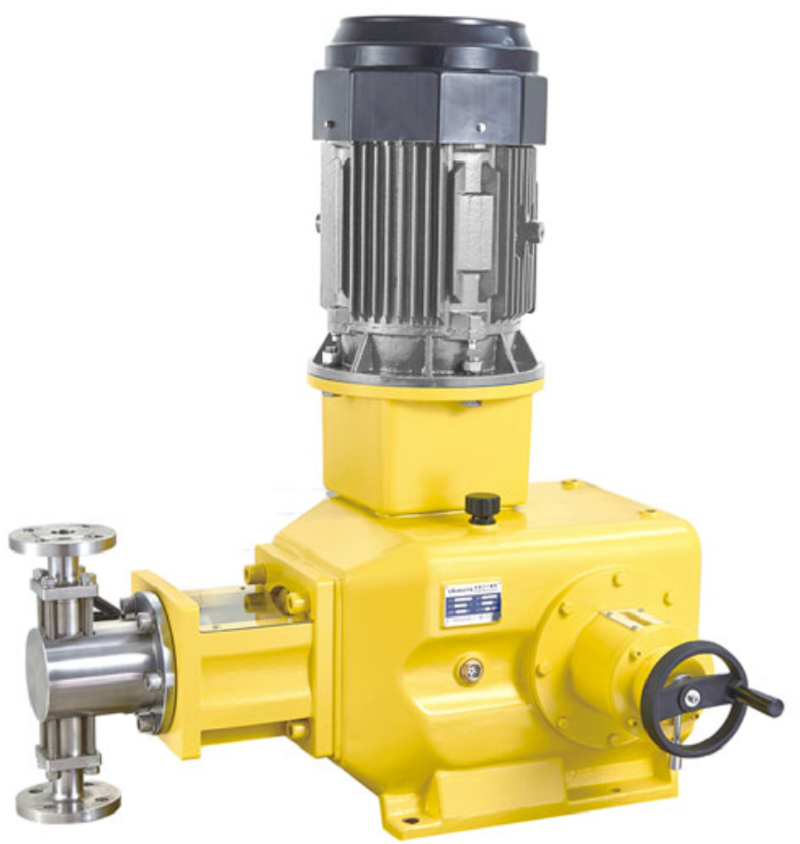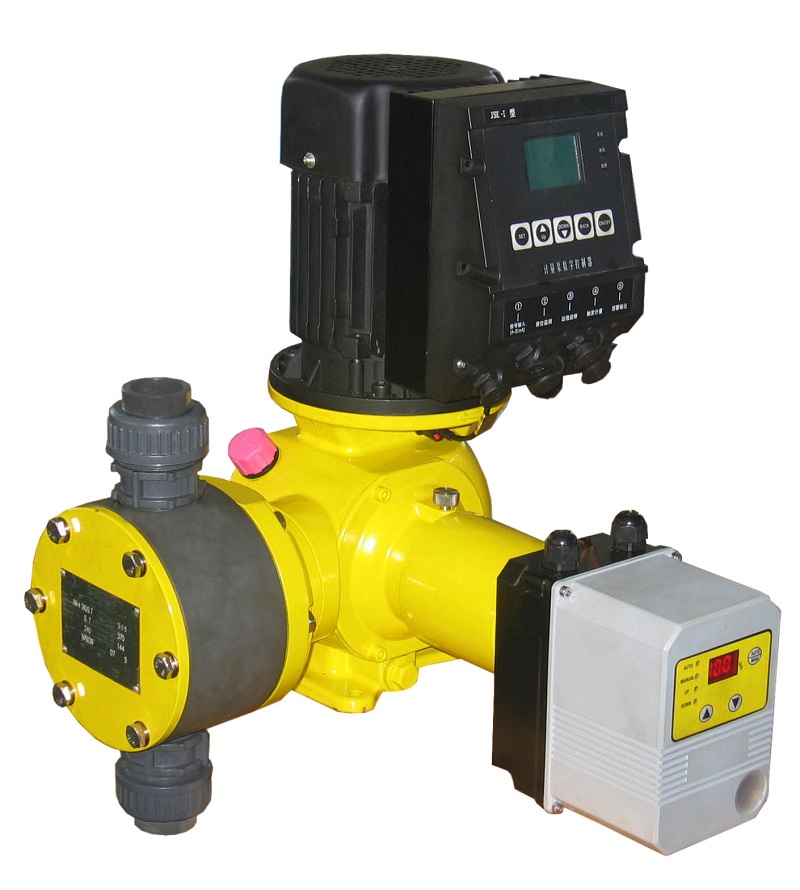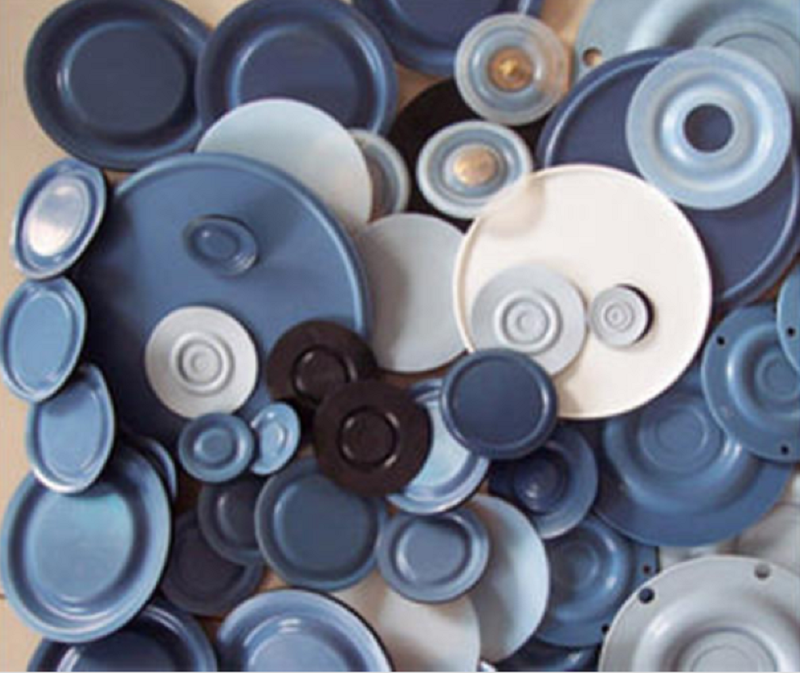Type of metering pump

The metering pump can be divided into plunger metering pump and diaphragm metering pump according to the structure of hydraulic end. Among them, the plunger metering pump can be divided into ordinary valved pump and valveless pump; Diaphragm metering pump is divided into mechanical diaphragm metering pump, hydraulic diaphragm metering pump and bellows metering pump. This paper introduces the two main categories of metering pumps
Structure of plunger metering pump
The metering pump is composed of motor, power end and hydraulic end.
The main components of the power end include: worm gear, worm, connecting rod, crosshead, crosshead pin, worm gear shaft, eccentric wheel, sliding shaft, sliding shaft pin, guide, adjusting nut, adjusting rod, hand wheel, adjusting bracket, and transmission box
The main components of the hydraulic end include: plunger, hydraulic cylinder, compression nut, packing, guide sleeve, ball valve, valve seat, valve seat sleeve, inlet pipe and outlet pipe
Working principle of plunger pump metering pump
The motor is directly connected with the worm through the coupling, and drives the worm gear and N-axis (eccentric wheel) to operate. The N-axis (eccentric wheel) drives the connecting rod (bow frame) to reciprocate, and drives the plunger to reciprocate. When the plunger moves back to the dead center, the suction check valve is opened and the liquid is sucked in; When the plunger moves forward to the dead center, the suction check valve group is closed, the discharge check valve group is opened, and the liquid is discharged from the pump body, so that the pump can suction and discharge liquid.
Characteristics of plunger metering pump
- It has a wide range of applications, and the production cost is relatively low in metering pumps.
- Large flow range, up to 76m ³/ h; The flow is adjustable within the range of 10%~100%, and the metering accuracy is ± 1%; The pressure range is wide, and the maximum outlet pressure can reach 50MPa; When the outlet pressure changes, the flow is almost constant.
- It can transport high viscosity media, but is not suitable for the transport of corrosive, volatile, flammable, explosive, toxic and environmentally polluting media.
- The shaft seal is a packing seal with leakage. The relative movement between the packing and the plunger is easy to cause wear, so it is necessary to adjust the packing periodically and replace the plunger if necessary. In addition, the packing ring shall be pressure washed and drained.
- There is no safety relief device, and the outlet pipeline must be equipped with a safety valve to protect the safe operation of the pump.
Working principle of diaphragm metering pump
Aspiration process
The motor is connected with the worm through the coupling, and drives the worm gear and N-axis to operate. The N-axis drives the plunger to and fro through the connecting rod. When the plunger moves backward, negative pressure is generated in the hydraulic cavity, which makes the diaphragm deflect and deform backward, and the volume of the medium cavity increases. At this time, the outlet check valve is closed, the inlet check valve is opened, and the medium enters the medium cavity of the pump head. When the plunger reaches the rear dead center, the suction process of the pump head is ended.
Discharge process
When the plunger moves forward, the hydraulic oil in the hydraulic chamber pushes the diaphragm forward to deflect and deform, and the volume of the medium chamber decreases, so that the inlet check valve group is closed, the outlet check valve group is opened, the medium is discharged upward, and the plunger continuously reciprocates. The metering pump can continuously deliver the medium, change the plunger stroke, and adjust the flow of the metering pump by 0~100%.
Working principle of internal circulation pressure balance system
When the pressure in the hydraulic cavity is higher than the rated value, the pressure relief valve will automatically open, allowing the released hydraulic oil to enter the oil pool through the oil return pipe; When the hydraulic oil in the hydraulic chamber is insufficient, the oil make-up valve is opened, and the hydraulic oil in the oil pool is automatically fed into the hydraulic chamber through the oil inlet pipe. Keeping the pressure in the hydraulic chamber balanced is one of the important factors for the long service life of the diaphragm.
Characteristics of hydraulic diaphragm metering pump
- No dynamic seal, no leakage and simple maintenance.
- The pressure can reach 35MPa; When the flow rate is within the range of 10:1, the metering accuracy can reach ± 1%; When the pressure increases by 6.9 MPa, the flow decreases by 5%, but the stability accuracy can still be maintained at ± 1%.
- High technology content and high reliability, so the price is high.
- It is suitable for medium viscosity media, especially for conveying toxic, flammable, explosive, corrosive media and media containing a small amount of particles.
- The two measurements of the diaphragm are respectively the medium and hydraulic oil. The force on the diaphragm is uniform, the service life of the diaphragm can reach more than 8000 hours, and the operating cost is.
- The hydraulic end is equipped with a built-in safety valve to protect the safe operation of the pump.
- Diaphragm rupture alarm device can be configured to improve the safety of metering pump system.



